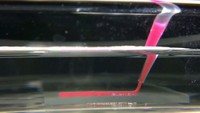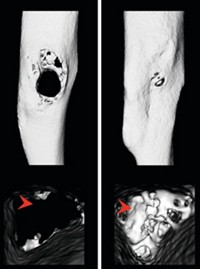Advertisement
Grab your lab coat. Let's get started
Welcome!
Welcome!
Create an account below to get 6 C&EN articles per month, receive newsletters and more - all free.
It seems this is your first time logging in online. Please enter the following information to continue.
As an ACS member you automatically get access to this site. All we need is few more details to create your reading experience.
Not you? Sign in with a different account.
Not you? Sign in with a different account.
ERROR 1
ERROR 1
ERROR 2
ERROR 2
ERROR 2
ERROR 2
ERROR 2
Password and Confirm password must match.
If you have an ACS member number, please enter it here so we can link this account to your membership. (optional)
ERROR 2
ACS values your privacy. By submitting your information, you are gaining access to C&EN and subscribing to our weekly newsletter. We use the information you provide to make your reading experience better, and we will never sell your data to third party members.
Materials
Microbe Killer Sheds Its Skin
Materials: Degradable polymer exposes a fresh antimicrobial surface
by Neil Savage
December 10, 2015

Antimicrobial surfaces can kill bacteria, helping to prevent medical devices from causing infection, or algae from fouling the hulls of ships. But eventually, dead bacteria, proteins, and other biological molecules build up a coating on the surfaces, rendering them useless. Now researchers have developed a way to let such materials shed their skin, exposing a fresh, microbe-killing layer (ACS Macro Lett., 2015, DOI: 10.1021/acsmacrolett.5b00686).
The trick is to create two discrete layers of antimicrobial material, separated by a degradable polymer, says Karen Lienkamp, a polymer scientist at the University of Frieburg. As the top layer wears out its bacteria-killing abilities, the polymer underneath it breaks up, casting the top layer away and exposing the unsullied bottom layer. Though there’s no connection between the sullying and the breakup, ideally the degradation rate of the polymer would match the useful lifetime of the top layer, Lienkamp says. The team built their layered material on a silicon substrate functionalized with benzophenone molecules. On the substrate, the team applied a poly(oxonorbornene)-based mimic of an antimicrobial peptide (SMAMP), mixed with a tetrathiol cross-linker. When the researchers exposed the mixture to ultraviolet light, the polymer cross-linked and reacted with the benzophenones, sticking to the substrate. On top of the first layer, they placed a layer of poly(sebacic anhydride), which dissolves safely within the human body over several days. Finally, they added a second SMAMP layer—this time with dye added so they could visually distinguish it from the bottom layer—and again cured it with UV light.
To allow the layers to separate cleanly as intended, they used a couple of different strategies. They made the layers 100 nm thick, much thicker than typical thin films, which reduced the effect of electrostatic forces that might hold the layers together, Lienkamp says. The team also had to make sure no covalent bonds were formed across the layers. “The adhesion that holds them together has to be just strong enough, but not too strong,” she says. The forces holding the layers together are probably based on non-polar interactions between molecules, she says, though that hasn’t been proven.
For a speeded-up test of the degradation process, Leinkamp’s team bathed their material in hydrochloric acid and watched with fluorescence microscopy as the dye-laced layer came off. Then, to show that the underlying layer was clean enough to kill microbes, they sprayed it with Escherichia coli bacteria. No bacteria were detected on the newly exposed surface, nor on material with the top layer intact, whereas approximately 1,000 bacterial colonies grew from cells on a blank silicon wafer used as a control.
Gregory N. Tew, a polymer chemist at the University of Massachusetts, Amherst, who was not involved in the work, says there are several steps between this proof-of-concept work and a practical coating, including demonstrating that it works well enough for a given application, and getting it through regulatory review for use in humans. Still, he thinks the work is promising.
Lienkamp says it should be possible to extend the lifetime of a coating by adding more layers and using a series of polymers that degrade at different rates.





Join the conversation
Contact the reporter
Submit a Letter to the Editor for publication
Engage with us on Twitter